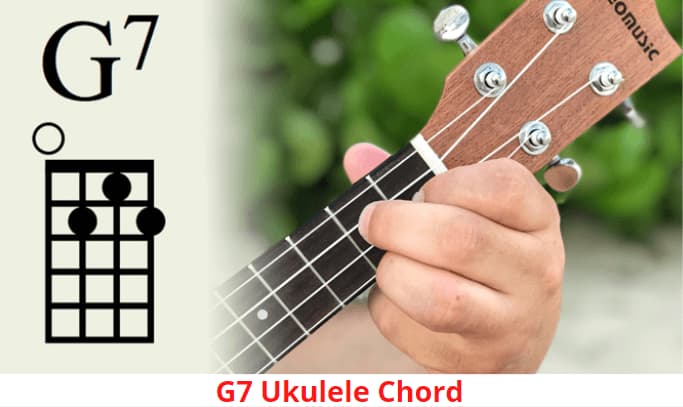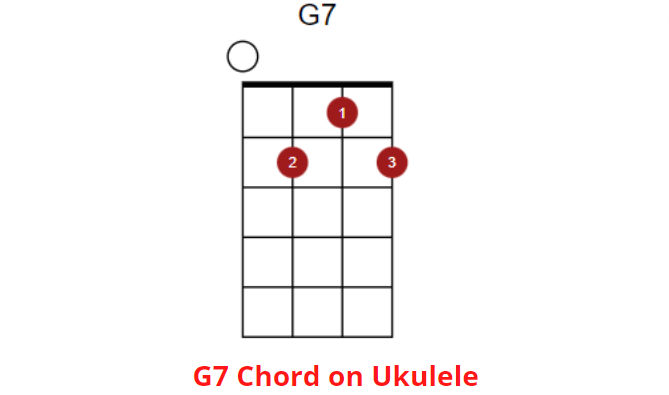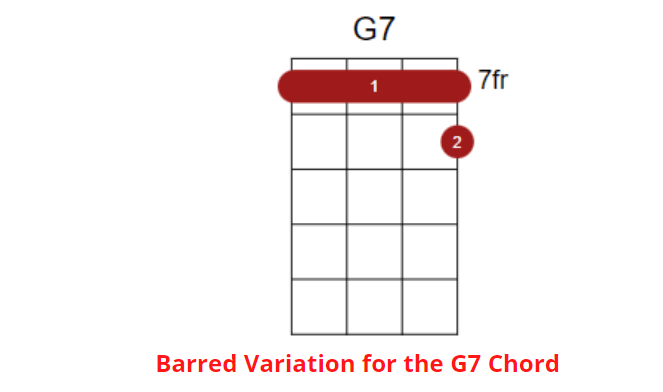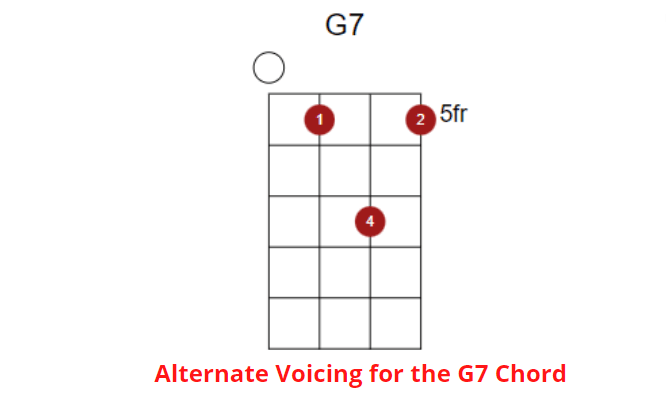
The G7 ukulele chord! It’s essential to develop a firm understanding of chords when mastering to play a stringed instrument, such as the ukulele or the guitar. While playing music, chords deliver their basis, then we utilize them to develop tones, arrangements, and more.
Every distinct type of chord contains a varied sound, and some chords instantly take recognition and distinction, such as the influential 7th or 7th chord sound.
Musicians extensively use 7th chords in music as a way to create contrast between more conventional major and minor chords. Indeed, these chords give musicians a powerful way of tension and release when the major chord is utilized first.
Perhaps one of the most widely utilized 7th chords in Western music is the G7 chord. While you master a ukulele and strum popular songs, you must cover this chord.
Therefore, it’s well worth the time if you wish to learn how to play a uke. If you think about how to adapt to the G7, this lesson delivers how it is built in addition to some different ways to strum and use in songs.
The Basics of the G7 Ukulele Chord
Most types of chords are made around our neck, called the trio. A trio means a chord consisting of three notes that are played together.
Moving further, we can divide the trio into two initial groups, such as major and minor. A minor triad is formed of a root note, a minor 3rd, and a perfect 5th, while a major triad is formed of a root note, a major 3rd, and a perfect 5th.
The use of major triads is needed for building 7th chords like G7. Adding a flattened 7th note to the major triad is the only difference. Indeed, it creates a distinctive sound on the 7th chord.
To be noted, it is also possible for us to play 7th chords as triads by leaving aside one of the other notes of the chord.
The reason is that all chords contain a few different voicings that musicians can utilize to play them. Voicing means a way of selecting notes from a specific chord. For instance, the standard G7 consists of the notes G, B, D, and F.
How to Play the G7 Chord on Ukulele
As we have much knowledge about the G7 now, we might hunt for some different approaches to playing this chord. Each of these voicings contains its innate, unique virtues.
Therefore, it can be worth testing with each voicing and observing which ones you are delighted to play or love the best sound.
For the G7, it becomes the ideal voicing. Keep the G string open if you desire to play this chord.
After that, the C string on the 1st fret with your 1st finger, the C string on the 2nd fret with your 2nd finger, and the A string on the 2nd fret with your 3rd finger.
If you strive to play the ukulele as a new player, this chord figure may seem a bit complex. Anyway, after trying once, it appears natural compared to looking at the first view.
Barred Variation for the G7 Chord
It’s called another version of the G7 ukulele chord, and musicians play this voicing as a barre chord. To accomplish this, fret the four strings at the seventh fret with your 1st finger. After that, play the A string at the eighth fret with your 2nd finger.
Barre chords are famous for being troublesome to strum. Despite being one of the easiest barre chords considering shape, it might seem to be tough for you to hold the chord to sustain for long periods at first, as this position might cause strain on your fretting hand.
In this case of being tricky to sustain this chord, frequently practicing can be the best way for you, and you attempt to compress the tension in your fretting hand. Don’t forget to take frequent breaks!
Alternate Voicing for the G7
Another voicing we love is here for the G7 chord on the ukulele. Fret the A string at the 5th fret with your 2nd finger, the C string at the 5th fret with your 1st finger, and the E string at the 7th fret with your 4th finger. Keep the lower G string open.
Songs that Use the G7 Chord
Burl Ives – Down in the Valley: Burl Ives is a straight and gloomy song of longing, depending heavily on G7 chords in many editions.
The Beatles – Twist and Shout: For tension and release to much effect, the early Beatles classic “Twist and Shout” utilizes the G7 chord.
Hank Williams – Jambalaya: It is an atmospheric story of life in the Bayou. Jambalaya becomes an excellent instance of the G7 used well.
Conclusion
Nothing happens without hard work. Although the D7 is somewhat tricky to learn, continuous practice makes your learning simple.
Many famous and popular songs are sung using the D7. So, learning it is essential to becoming a skilled and professional ukulele player. Hopefully, this lesson will contribute to mastering the D7 ukulele chord.
Read also:


